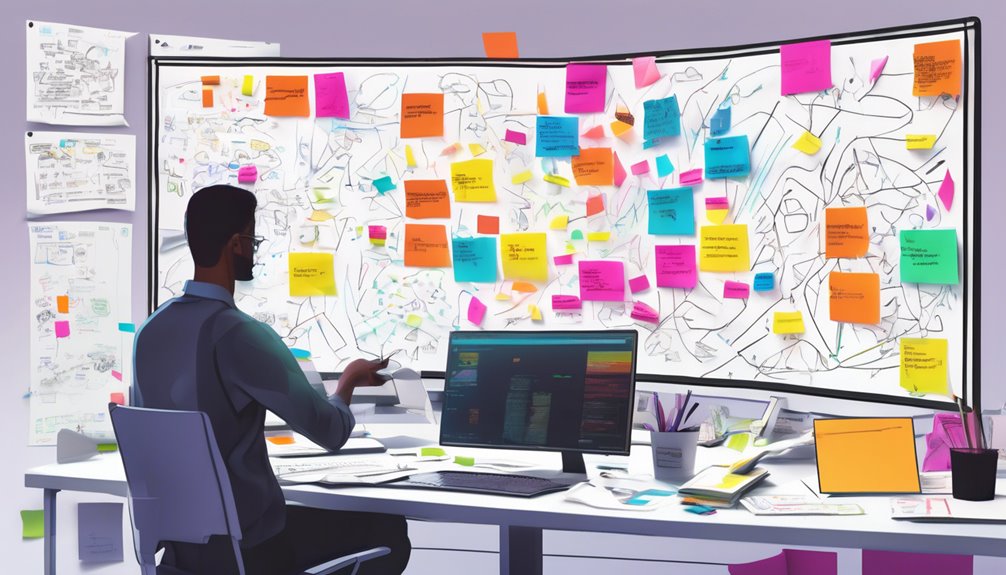When you think about streamlining your organization's workflows, a process mapping tool can be your best ally. It helps you break down complicated tasks, making them easier to manage. By identifying inefficiencies, you can enhance productivity and improve outcomes. But what should you consider when choosing the right tool? And how can you effectively implement it in your team? Let's explore these critical aspects next.
What Is Process Mapping?

Process mapping is a vital tool that visualizes workflows and processes within an organization. It helps you break down complex tasks into clear, manageable steps, enabling you to understand how each component interacts.
By creating a visual representation, you can identify bottlenecks, redundancies, or areas needing improvement. You'll often use flowcharts or diagrams to depict the sequence of activities, decisions, and information flows. This clarity allows you to communicate effectively with your team and stakeholders, ensuring everyone's on the same page.
Moreover, process mapping supports standardization, making it easier to train new employees and maintain consistency. Ultimately, it empowers you to streamline operations and enhance overall efficiency, leading to a more productive work environment.
Benefits of Using Process Mapping Tools
When you utilize process mapping tools, you unlock a range of benefits that can significantly enhance your organization's efficiency. First, these tools help you visualize workflows, making it easier to identify bottlenecks and areas for improvement.
You'll find that engaging team members in the mapping process fosters collaboration and increases accountability. Additionally, clear documentation of your processes aids in training new employees, reducing onboarding time.
By standardizing processes, you ensure consistency and quality in output, which boosts customer satisfaction. Finally, process mapping allows for better decision-making, as you base your strategies on concrete data rather than assumptions.
Embracing these tools means empowering your team and streamlining operations for long-term success.
Key Features to Look for in a Process Mapping Tool

Finding the right process mapping tool is key to reaping the benefits discussed earlier. When choosing a tool, look for user-friendly design, so you can easily create and modify maps without a steep learning curve.
Collaboration features are essential too; they enable your team to work together seamlessly. Check for integration capabilities with existing software, ensuring smooth data flow.
Customization options let you tailor the maps to your specific needs. Additionally, consider built-in templates to save time and spark creativity.
Finally, don't overlook analytical tools that help you track process efficiency and identify improvement areas. With these features, you'll be well-equipped to optimize your processes effectively.
Popular Process Mapping Tools in the Market
Navigating the landscape of process mapping tools can be overwhelming, given the myriad of options available today.
Popular choices include Lucidchart, which offers a user-friendly interface and collaborative features, making it easy for teams to work together. You might also consider Microsoft Visio, known for its robust features and integration with other Microsoft products.
If you're looking for something more budget-friendly, draw.io provides a solid free option with essential mapping capabilities.
For those who prioritize cloud-based solutions, Creately enables real-time collaboration and is accessible from anywhere.
Lastly, Bizagi stands out with its focus on business process management, providing advanced automation features.
Explore these tools to find the one that best meets your specific needs.
Steps to Create an Effective Process Map

Creating an effective process map starts with clearly defining your objectives. Determine what you want to achieve and who'll use the map.
Next, gather a team of stakeholders to share insights and perspectives. This collaboration ensures a comprehensive view of the process.
Once you've gathered input, outline the major steps involved in the process, keeping it simple and straightforward. Use standard symbols to represent actions, decisions, and documents, ensuring everyone understands the map.
As you draft, validate each step with your team, making adjustments as necessary. Finally, review the map for clarity and accuracy before finalizing it.
Best Practices for Implementing Process Mapping in Your Organization
To successfully implement process mapping in your organization, it's essential to foster a culture that values transparency and collaboration.
Start by engaging stakeholders at all levels; their insights will enrich the mapping process. Clearly define your objectives before diving in, ensuring everyone understands the purpose behind the maps.
Use visual tools that are easy to read and share, making the maps accessible to all team members. Regularly review and update the maps to reflect changes in processes, keeping them relevant.
Encourage feedback and make adjustments based on team input. Finally, provide training to empower employees with the skills to create and utilize process maps effectively, promoting continuous improvement across your organization.
Conclusion
Incorporating a process mapping tool into your organization can transform the way you visualize and optimize workflows. By identifying bottlenecks and streamlining tasks, you'll boost efficiency and enhance team collaboration. With the right tool, you can ensure consistent quality and improve customer satisfaction. Remember, investing time in creating effective process maps and following best practices will lead to informed decision-making and a more productive work environment. Start mapping your processes today for lasting results!

